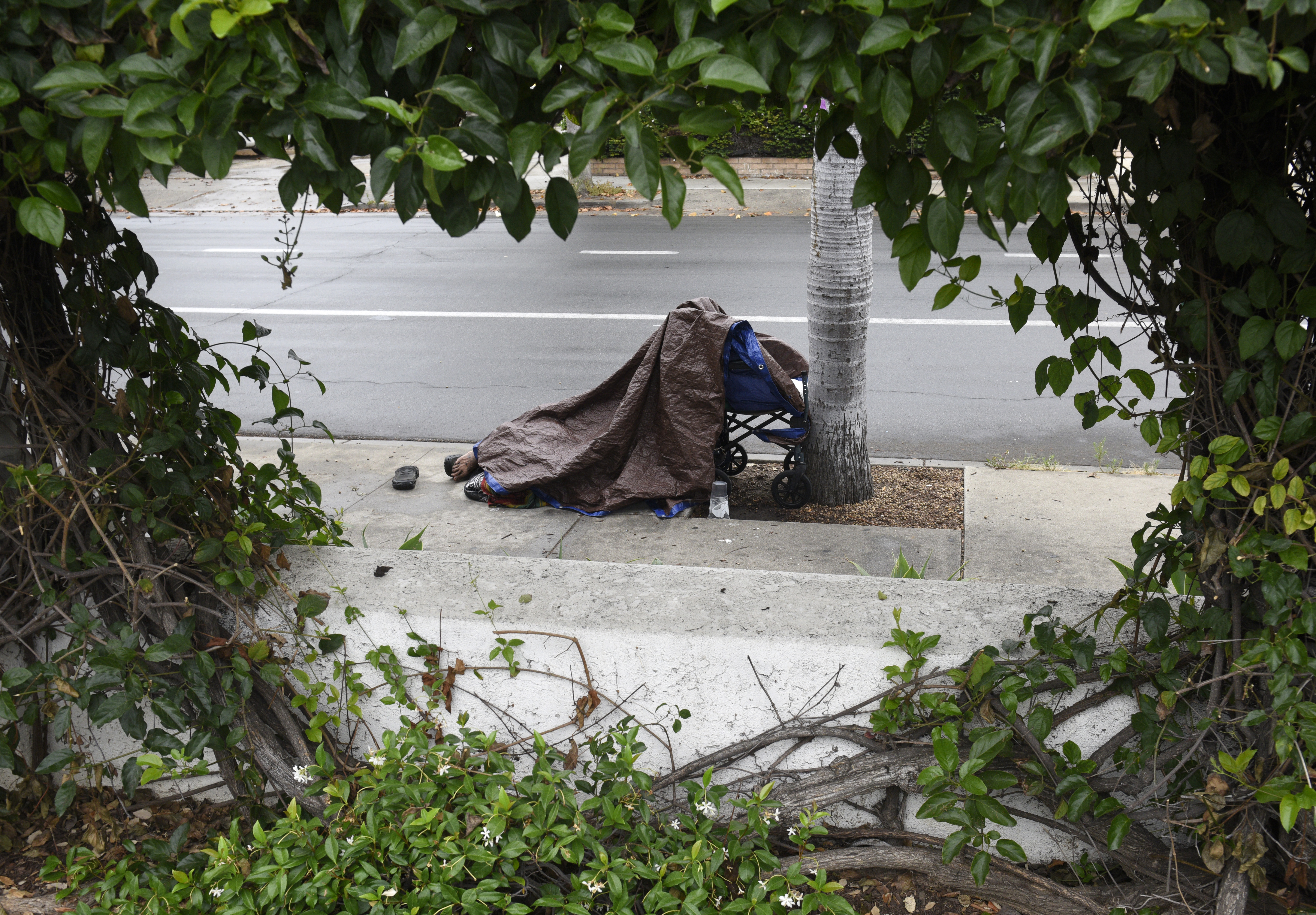County Supervisors Wrestle with Homelessness
Big Problems Beget Big Plans for Santa Barbara’s Homeless Population

What might otherwise have been another wonky disquisition on the state of homelessness turned into a low-key battle between hope and despair, pitting Santa Barbara County Supervisor Peter Adam, who vigorously staked out the futilitarian position, against the rest of the county supervisors, who argued less energetically on behalf of measured optimism. In the end, no one really won, and the supervisors voted unanimously to accept a planning report that promises to be the first of two such documents to reportedly guide the supervisors’ spending on efforts to prevent homelessness.
Addressing Dinah Lockhart, the county administrator leading the charge for the homeless plan, Supervisor Adam asked how many similar grand plans the county has undertaken. When told the last took place in 2006, Adam all but scoffed, “Yeah, how did that work out?” Explaining his pessimism, Adam noted that in every homeless count undertaken since 2011, the number countywide hovered steadily at around 1,800. “We haven’t reduced the number of homeless,” he stated. “It seems to be a persistent problem, and I’m not sure we’re addressing it.”
Lockhart held her ground, explaining that the last plan got a lot of people talking about homelessness who might not otherwise have been so engaged. About 1,000 units of affordable housing were developed since then, she said.
At a time when South Coast residents seem acutely aware of the issue, the total numbers of homeless people recorded during biennial counts are not merely holding steady; the number of chronically homeless people — those without fixed abodes for 12 months or more — has been dipping significantly. In 2013, for example, there were reportedly 913; in 2017, there were 226; and this year, it’s back up to 423.
The report made no effort to reconcile recorded numbers with the subjective reality of public perception. Instead, it highlighted certain grim but not surprising details that Lockhart said might help focus efforts to get these people off the streets and into their own homes. Nearly 65 percent have mental-health issues, 46 percent of which were “severe.” Nearly 60 percent experienced a degree of violence necessary to qualify as traumatic. Many were veterans, some were refugees from domestic abuse, and there was a significant number of grown-up foster kids. Drug and alcohol abuse were reported by many; 73 percent claimed to have been incarcerated. All this information, Lockhart said, would help devise specific strategies to maximize the odds of success.
When Supervisor Adam pressed for any evidence to suggest things had improved, Supervisor Gregg Hart stepped in to suggest a more sophisticated understanding of the problem that they arrived at. Hart articulated the “housing first” credo, which holds it’s a lot more effective to expose homeless people to the services needed to turn their lives around when they’re housed than when they’re living on the streets. “Look at the glass,” Hart implored Adam. “It can be half full, too.”
Adam wasn’t having it. He argued that drug addiction was a much bigger factor in homelessness than is generally acknowledged. “These are not just people who hit bottom,” he said. He expressed doubt that many people on the street can be saved. Schools, he suggested, should teach students at an early age to believe in the possibility of economic prosperity. “I would hope we could inspire people to aspire to a better life,” but in the end concluded, “I don’t know what the solution is.
“Good luck,” he added grimly.
Supervisor Das Williams wondered whether it made more sense for the county to spend its limited resources on those who could be kept off the streets with little cost or on “high flyers” who are drain on a myriad of public agencies. Both, he opined, were critical.
In the meantime, Lockhart told the supervisors that under the first phase of the homeless plan, she projected permanent housing would be found for 326 individuals and that 955 households would be helped. In just the past nine months, she added, the city and county housing authorities had found permanent housing for 230 households.



